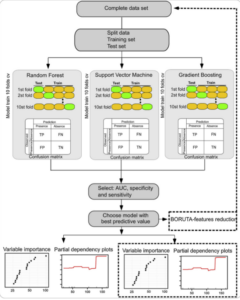The swine industry collects a vast and ever-expanding amount of data. Considering the existing knowledge on determinants of disease and its effect on pathogen ecology, it is possible to use historical data to forecast upcoming health-related events. For instance, existing data can forecast the probability of pathogen introduction into herds and/or regions. Similarly, it is possible to forecast the effects of the three way interaction between host-environment-pathogen on the health and productivity of swine populations.
We believe that such forecasting tools enable Precision Swine Health & Productivity Management, allowing decision-makers to transform their vast amount of data into information to guide their decision trees, positively influencing swine health, welfare & productivity.
| Title | Link to Materials |
| Forecasting swine health & productivity: Precision Swine Health & Production: making decisions for specific sites at specific points in time  | > Magalhães et al. Comparing forecasting models for predicting nursery mortality under field conditions using regression and machine learning algorithms. Smart Agricultural Technology 2023. > Magalhães et al. Whole-herd risk factors associated with wean-to-finish mortality under the conditions of a Midwestern USA swine production system. Preventive Veterinary Medicine 2022. |
| Forecasting vulnerability for disease outbreaks, breeding herd level: Measuring biosecurity vulnerability: biosecurity scoring systems to measure the probability of upcoming PRRSV outbreaks.  | > Silva et al., Machine-learning algorithms to identify key biosecurity practices and factors associated with breeding herds reporting PRRS outbreak. 2019. Preventive Veterinary Medicine. |